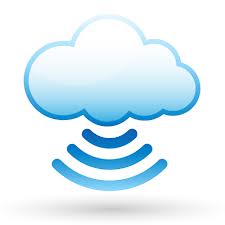
Cloud computing is all the rage. "It's become the phrase du jour," says Gartner senior analyst Ben Pring, echoing many of his peers. The problem is that (as with Web 2.0) everyone seems to have a different definition. As a metaphor for the Internet, "the cloud" is a familiar cliché, but when combined with "computing," the meaning gets bigger and fuzzier. Some analysts and vendors define cloud computing narrowly as an updated version of utility computing: basically virtual servers available over the Internet. Others go very broad, arguing anything you consume outside the firewall is "in the cloud," including conventional outsourcing.
Cloud computing comes into focus only when you think about what IT always needs: a way to increase capacity or add capabilities on the fly without investing in new infrastructure, training new personnel, or licensing new software. Cloud computing encompasses any subscription-based or pay-per-use service that, in real time over the Internet, extends IT's existing capabilities.
InfoWorld talked to dozens of vendors, analysts, and IT customers to tease out the various components of cloud computing. Based on those discussions, here's a rough breakdown of what cloud computing is all about:
Software as a Service (SaaS)
This type of cloud computing delivers a single application through the browser to thousands of customers using a multitenant architecture. On the customer side, it means no upfront investment in servers or software licensing; on the provider side, with just one app to maintain, costs are low compared to conventional hosting.
Utility computing
The idea is not new, but this form of cloud computing is getting new life from Amazon.com, Sun, IBM, and others who now offer storage and virtual servers that IT can access on demand. Early enterprise adopters mainly use utility computing for supplemental, non-mission-critical needs, but one day, they may replace parts of the datacenter.
Web services in the cloud
Closely related to SaaS, Web service providers offer APIs that enable developers to exploit functionality over the Internet, rather than delivering full-blown applications.
Platform as a Service
Another SaaS variation, this form of cloud computing delivers development environments as a service. You build your own applications that run on the provider's infrastructure and are delivered to your users via the Internet from the provider's servers.
Managed Service Providers (MSPs)
One of the oldest forms of cloud computing, a managed service is basically an application exposed to IT rather than to end-users, such as a virus scanning service for e-mail or an application monitoring service (which Mercury, among others, provides).
Service Commerce Platforms
A hybrid of SaaS and MSP, this cloud computing service offers a service hub that users interact with. They're most common in trading environments.
Internet integration
The integration of cloud-based services is in its early days. OpSource, which mainly concerns itself with serving SaaS providers, recently introduced the OpSource Services Bus, which employs in-the-cloud integration technology from a little startup called Boomi.
 RSS Feed
RSS Feed